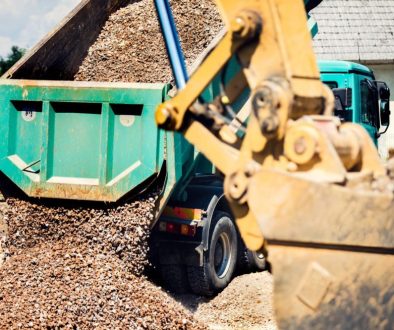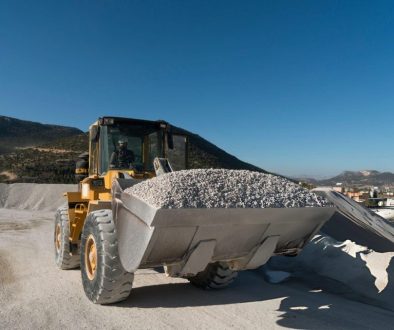Aggregates are often the unsung heroes of landscaping projects. They bring form, function, and an earthy aesthetic to gardens, boosting their appeal and usability. Using aggregates in your home landscaping is a fantastic way to add texture and contrast, making your outdoor space not just beautiful but practical too. Homeowners in Whitchurch can use these versatile materials to transform their gardens into stunning, low-maintenance havens. Whether you’re looking to create a peaceful retreat or an inviting backdrop for social gatherings, aggregates offer a range of possibilities to suit your needs and environment.
When you think about enhancing your garden, aggregates may not be the first thing that comes to mind. However, they are perfect for creating elegant pathways, forming sturdy driveways, or enhancing the overall visual appeal through creative rock gardens. In Shropshire’s mild climate, aggregates serve as a resilient option that stands up to various weather conditions, making them an ideal choice for your garden designs. Let’s explore some of the top uses for aggregates in your home landscaping projects.
Creating Garden Pathways
Garden pathways add charm and order to any garden, guiding visitors and preventing trampling on your precious plants. Aggregates provide a strong and attractive solution for creating these pathways, offering a natural look that complements any landscape design.
– Types of Aggregates for Pathways:
– Gravel: Popular for its affordability and availability, gravel is easy to lay and rearrange, adding a rustic touch to your pathways.
– Slate Chippings: These add a sleek, modern finish with their dark tones and smooth texture.
– Crushed Stone: Offers durability and comes in various colours to match your garden’s style.
– Installation Process:
1. Plan Your Path: Determine the route and width of your pathway. Make sure it’s wide enough for comfortable walking.
2. Clear and Level the Ground: Remove any vegetation and create an even base for your pathway.
3. Lay Base Material: Use crushed stone or a similar base material to ensure stability.
4. Spread Aggregates Evenly: Add your chosen aggregate on top, ensuring an even layer that’s roughly 5 cm thick.
5. Compact the Surface: Ensure the path is firm by compacting the aggregates, which helps in providing a stable surface for walking.
By following these steps, you can create garden pathways that are as practical as they are beautiful, setting the stage for the rest of your landscaping transformation.
Building Rock Gardens
Rock gardens offer a unique way to incorporate aggregates into your landscaping. They not only add a touch of natural beauty but also provide a low-maintenance solution that thrives in dry conditions, perfect for areas with limited rainfall. Using different types of aggregates can bring varied textures and colours, making the features of your rock garden stand out.
– Steps to Build a Rock Garden:
1. Select the Location: Choose a sunny spot where you can showcase the different aggregates and plants effectively.
2. Prepare the Site: Clear the area of any debris and level the ground, shaping it slightly unevenly to mimic a natural rock outcrop.
3. Choose Your Rocks: Opt for a mix of large boulders and smaller stones. Place the larger ones first to serve as focal points.
4. Fill with Aggregates: Use aggregates like pea gravel or river stones to fill the spaces between your larger rocks, providing a base for planting hardy plants.
5. Plant Selection: Incorporate drought-tolerant plants like succulents and alpine flowers that thrive among rocks.
Rock gardens enhance your landscape’s visual appeal while offering practical benefits such as improved drainage and reduced weed growth. The result is an eye-catching display that requires minimal upkeep.
Using Aggregates for Driveways
Aggregates are not just for aesthetic appeal; they’re quite functional when used in driveways. Using them can strengthen your driveway while offering a range of design possibilities.
– Best Types of Aggregates:
– Crushed Stone: Ideal for providing a strong structural base.
– Pea Gravel: Offers a smooth finish and is pleasant to walk on.
– Granite Chippings: Known for their durability and stylish appearance.
– Maintenance Tips:
– Regularly rake the surface to maintain an even layer.
– Keep the driveway borders well-defined to prevent aggregates from spreading into adjacent areas.
– Consider applying a stabiliser to prevent displacement of aggregates.
By choosing the right type of aggregate and maintaining it properly, your driveway can become a durable and attractive part of your home’s exterior, adding to the overall curb appeal.
Enhancing Flower Beds and Borders
Aggregates can do wonders for your flower beds and borders by providing both functional and aesthetic benefits. They help retain soil moisture, reduce erosive impact from heavy rain, and suppress weeds that compete with your plants.
– Benefits of Aggregates:
– Moisture Retention: Aggregates help keep the soil moist by reducing evaporation, which is a big plus during dry spells.
– Weed Control: A layer of aggregates serves as a barrier, making it difficult for weeds to take root.
– Visual Appeal: The contrasting colours and textures can highlight the features of your plants, drawing the eye to your garden’s most beautiful spots.
Selecting the right type of aggregate to match your garden style and plant types can further enhance the beauty and viability of your garden beds, bringing life and structure to your outdoor spaces.
Creating Water Features
Water features like ponds or fountains can become captivating focal points in your garden. Aggregates play a key role in constructing these features, providing stability and aesthetic appeal.
– Choosing the Right Aggregates:
– River Rocks: Perfect for lining the edges of ponds, giving a natural appearance.
– Pebbles: Add to the interior of fountains for a decorative finish.
– Slate: Used as stepping stones around water features, creating a contrasting element.
Maintaining a water feature with aggregates involves ensuring an even distribution, which prevents water from eroding the edges of the pond or fountain. Regularly check for loose rocks and adjust them to maintain the feature’s shape and beauty.
Bringing It All Together for a Stunning Landscape
Aggregates offer myriad benefits, from practical functions like drainage and weed control to enhancing the visual appeal of your garden elements. By employing these versatile materials, homeowners in Whitchurch can create landscapes that are both durable and beautiful. Whether you’re planning a new garden pathway, establishing a sturdy driveway, or building a serene rock garden, additional elements like water features can further enhance your outdoor space.
Embracing the use of aggregates in your landscaping projects is an excellent way to rejuvenate your garden. These materials help you achieve a well-balanced environment that requires minimal time and effort to maintain. The beauty and practicality of aggregates will undoubtedly transform your garden into a breathtaking space you’ll be proud to show off.
If you’re ready to transform your outdoor space with creative landscaping solutions, don’t forget to consider the effects of aggregates. They can make all the difference in creating attractive and functional gardens. When it’s time to tackle larger projects or clear out unwanted debris, remember you can easily hire a skip in Whitchurch to keep your project neat and efficient. Explore options with Enviro Skip Hire to make your landscaping dreams a reality.




